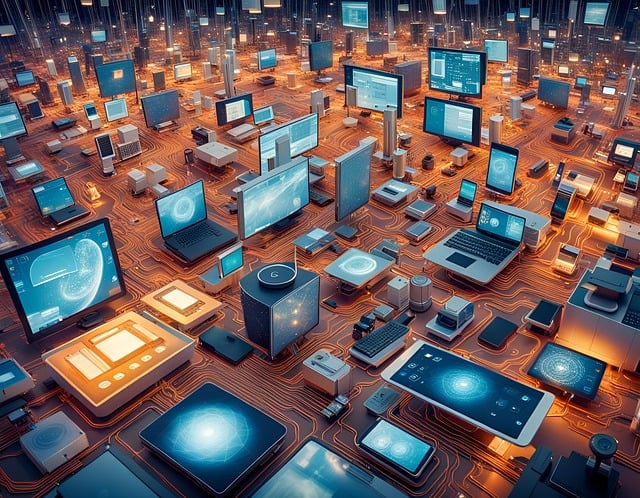AI real-time kitchen display systems are transforming culinary industries by automating tasks, improving decision-making, and enhancing overall kitchen performance. These systems provide chefs with live updates on incoming orders, prioritizing tasks based on urgency and available ingredients to minimize delays and waste. By integrating AI, businesses can optimize work processes like ingredient usage and inventory management, predict customer demands, and ultimately boost productivity, food quality, and customer satisfaction. Best practices for successful implementation include compatibility, user-friendly interfaces, employee training, data security, and regular updates.
“Explore the transformative power of Artificial Intelligence (AI) in business through computer vision applications, particularly in the dynamic sector of Food & Beverage (F&B). This article delves into how AI enhances kitchen operations with real-time kitchen display systems, revolutionizing food service efficiency. We examine the benefits of integrating AI and visual technology, including improved productivity, reduced waste, and enhanced customer experiences. Discover best practices for implementing these game-changing solutions.”
- Understanding AI Computer Vision: Unlocking Kitchen Efficiency
- Real-Time Kitchen Display Systems: A Game-Changer for F&B Businesses
- Integrating AI and Visual Technology: Benefits and Best Practices
Understanding AI Computer Vision: Unlocking Kitchen Efficiency

AI Computer Vision is transforming various industries, and one area it’s making significant inroads into is culinary operations. By leveraging advanced algorithms to interpret visual data, AI can enhance efficiency in kitchens through automated tasks and intelligent decision-making. This technology enables real-time kitchen display systems that visually communicate information about food preparation, inventory management, and even customer orders, streamlining workflows and minimizing errors.
For example, computer vision can analyze the progress of cooking tasks, ensuring dishes are prepared optimally. It can also assist in quality control by identifying defects or inconsistencies in food products. Moreover, AI-driven systems can predict demand and optimize stock levels, reducing waste and improving overall kitchen performance. These applications not only boost productivity but also contribute to better food quality and customer satisfaction.
Real-Time Kitchen Display Systems: A Game-Changer for F&B Businesses

In the fast-paced world of Food and Beverage (F&B) service, efficiency and accuracy are key to customer satisfaction and business success. AI real-time kitchen display systems have emerged as a game-changer in this industry, offering a dynamic solution for streamlining operations and enhancing productivity. These cutting-edge systems provide chefs and kitchen staff with a live, digital overview of incoming orders, allowing for swift response times and precise order management.
By integrating artificial intelligence, these displays can instantly prioritize tasks based on order urgency and ingredients available, minimizing delays and waste. Real-time updates ensure that every dish is prepared with efficiency, ensuring food quality and timely delivery to customers. This innovative approach not only optimizes kitchen workflow but also contributes to improved overall restaurant performance and customer experience.
Integrating AI and Visual Technology: Benefits and Best Practices

Integrating AI with visual technology, such as real-time kitchen display systems, offers immense benefits for businesses across various sectors. This powerful combination enhances operational efficiency by providing detailed insights and real-time data visualization. For instance, in a kitchen setting, AI-powered displays can optimize work processes by tracking ingredient usage, managing inventory, and predicting customer demands. This not only reduces waste but also ensures that every dish is prepared with precision and consistency.
Best practices for such integration include ensuring seamless hardware and software compatibility, focusing on user-friendly interfaces to encourage adoption, and providing comprehensive training to employees. Data security and privacy should be paramount, especially when dealing with sensitive culinary or customer information. Regular updates and maintenance are crucial to keep systems optimized and aligned with evolving business needs, ultimately maximizing the advantages of AI and visual technology in everyday operations.
AI computer vision applications, particularly real-time kitchen display systems, are transforming the food and beverage industry. By leveraging these innovative tools, businesses can streamline operations, enhance efficiency, and deliver superior customer experiences. Integrating AI with visual technology offers numerous benefits, from precise inventory management to optimized task allocation. Embracing these advancements is key for F&B establishments to stay competitive in today’s dynamic market, ensuring they can meet the evolving demands of their clientele.
